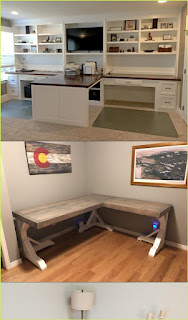Crafting a Classic: Building a Simple Wooden Picture Frame
Embark on a rewarding DIY project and build a beautiful, personalized picture frame using readily available materials and basic tools. This guide provides a step-by-step approach, perfect for beginners eager to explore woodworking. Forget mass-produced frames; create something unique, reflecting your style and craftsmanship.
Gathering Your Materials and Tools
Before you begin, gather your materials. You'll need four pieces of wood, ideally from a hardwood like oak or pine, cut to the exact dimensions you desire for your frame. Remember to account for the miter cuts (explained below) and the thickness of your picture. Measure twice, cut once! You'll also need wood glue, clamps (or a heavy object for applying pressure), sandpaper (various grits), wood stain or paint (optional), a finish (polyurethane or varnish), and a small saw (a miter saw is ideal, but a hand saw works fine). Don't forget your measuring tape and pencil!
Essential Tools for the Job
- Measuring Tape
- Pencil
- Miter Saw (or Hand Saw)
- Wood Glue
- Clamps (or heavy books)
- Sandpaper (various grits)
- Wood Stain or Paint (optional)
- Finish (polyurethane or varnish)
Cutting Your Wood for the Frame
Precision is key here. You need to cut each piece of wood at a 45-degree angleâ€"this is known as a miter cut. This angle ensures a clean, seamless join when assembling the frame. Use your miter saw (or carefully use your hand saw and a miter box for a precise 45-degree angle) to achieve this. Mark your cut lines clearly with a pencil to avoid mistakes. Take your time; accurate cuts are essential for a professional-looking finish.
Mastering the Miter Cut
If using a miter saw, adjust the saw to a 45-degree angle. Secure your wood firmly against the fence and carefully make your cut. For hand sawing, use a miter box to guide your saw and ensure an accurate 45-degree angle. Practice on scrap wood first to get comfortable with the process. Remember to always prioritize safetyâ€"wear safety glasses!
Assembling Your Frame
Once all four pieces are cut, apply a thin bead of wood glue to the angled edges of each piece. Carefully join the pieces, ensuring the corners form perfect 90-degree angles. Clamp the frame tightly together, or use heavy books to apply pressure while the glue dries completely. Allow the glue to set for at least 30 minutes, or as recommended on the glue bottle, for optimal strength.
Finishing Touches: Sanding, Staining, and Sealing
After the glue is fully dry, carefully remove the clamps. Now, it’s time to sand your frame to a smooth finish. Start with a coarser grit sandpaper (e.g., 120-grit) to remove any imperfections, then gradually move to finer grits (e.g., 220-grit) for a super-smooth surface. This sanding process will create a perfect surface for staining or painting and for a flawless finish.
Adding Color and Protection
Optional: Apply wood stain or paint to enhance the color and aesthetic appeal of your frame. Follow the manufacturer's instructions carefully. Once the stain or paint is dry, apply a protective finish, such as polyurethane or varnish, in several thin coats. This will protect your frame from moisture and scratches, ensuring it lasts for years to come. Let each coat dry completely before applying the next.
Displaying Your Masterpiece
Once the finish is completely dry, carefully attach picture hangers to the back of the frame. Now, slide your cherished photograph or artwork into your newly crafted frame. Admire your handiwork â€" a unique, personalized frame made with your own two hands! Enjoy the satisfaction of creating something beautiful and functional.






